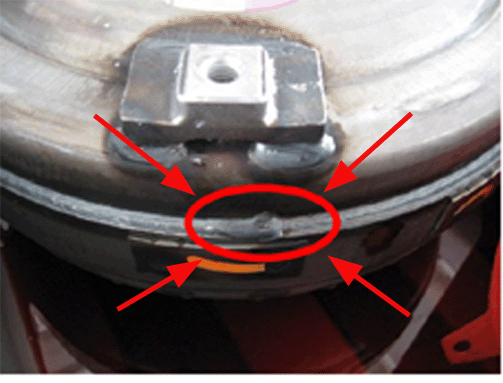Harsh TCC Apply Or TCC Cycling - keywords shudder surge vibration

| Subject: | Harsh TCC Apply or TCC Cycling |
| Models: | 2007 Chevrolet , Avalanche, Express, Silverado, Silverado Classic, Suburban, Tahoe, Trailblazer |
| 2007 GMC Envoy, Savana, Sierra, Sierra Classic, Yukon, Yukon XL, |
| 2007 Hummer H2 |
| 2007 Saab 9-7x |
| Equipped with 4L60E, 4L65E, 4L70E Automatic Transmission (RPO M30, M32, M70) |
This PI is being superseded to update concern and recommendation. Please discard PIP4040.
The following diagnosis might be helpful if the vehicle exhibits the symptom(s) described in this PI.
Condition/Concern:
Some customers may comment on a harsh TCC apply or TCC cycling on and off at approximately 40 - 45 MPH. This condition may occur in all V type engines in the above listed vehicles but is most likely to occur on vehicles equipped with a 4.3L, V-6 engine.
Torque converters that may experience this condition can be identified with the following P/Ns that can be found on a label stuck to the flywheel side of the torque converter.
24238892
24238894
24228895
24228898
Note: This condition has not been identified on any in-line 4, 5 or 6 cylinder engine or torque converters with any other P/N.
Recommendation/Instructions:
This condition may be caused by a mis-located seam weld on the torque converter that can warp the surface on which the converter clutch engages. This can cause a possible leak path during low apply pressure conditions.
To diagnose these conditions use a Tech 2 to monitor TCC slip speed.
| • | If the concern is harsh TCC apply note the slip speed when the TCC is commanded on. If the converter internal leak exists the slip speed will rapidly drop from 60-80 rpm slip to 0 rpm slip in less than one second. In a normal TCC apply the slip speed is gradually reduced over a longer period of time to provide a smooth apply. |
| • | If the concern is TCC cycling note the slip speed after the TCC is commanded on. If the converter internal leak exits the slip speed will cycle from 0 rpm slip to 60 rpm or greater slip in regular time intervals approximately 5 - 10 seconds apart. |
If either of the above slip conditions are found the torque converter weld should also be inspected. This can be done by removing the inspection hole cover on the bottom of the transmission and visually inspecting the weld. The weld should not end below an attachment lug or within 5 inches of the center of the lug, as shown See the attached illustration.
If the above conditions are found the torque converter should be replaced.
Torque converters obtained from GMSPO or with P/Ns other than those listed above may have the weld ending at or near the attachment lugs. This is acceptable and will not cause an issue.

Weld should not end under or within 5 inches either side of the center of an attachment lug
Please follow this diagnostic or repair process thoroughly and complete each step. If the condition exhibited is resolved without completing every step, the remaining steps do not need to be performed.
